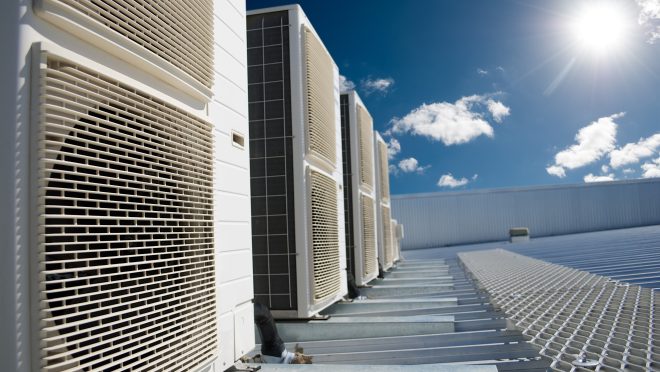Sustainable Cooling for Bangladesh: Escaping the AC Trap
Sustainable Cooling for Bangladesh: Escaping the AC Trap

As global temperatures rise, our growing dependence on conventional air conditioning is worsening the climate crisis. These systems may cool our spaces temporarily, but their increased use leads to more energy consumption and emissions, trapping us in a cycle that ultimately warms the planet further.
Around the globe, a quiet revolution in cooling technology and design is underway, and Bangladesh has both the need and the potential to be a part of it. To have a cooler, sustainable future, we need to rethink our buildings, embrace smarter technology, and foster enabling policies.
Our first and most fundamental task is to reexamine the very structures we inhabit. For centuries, our traditional architecture embodied a deep understanding of passive cooling. The high ceilings of Mughal and colonial buildings allowed warm air to rise; their thick walls absorbed and released heat gradually; and the broad verandas provided crucial shade. In our pursuit of speed and cost efficiency, modern construction has largely abandoned these time-tested principles. We must reclaim it if we are to achieve a sustainable future.
Imagine a Dhaka where bare concrete rooftops are replaced by vibrant green gardens. These rooftops would serve as natural insulators, cutting surface temperatures and helping to counter the urban heat island effect that leaves our cities far hotter than the villages. For a more accessible approach, requiring “cool roofs” coated with reflective, high-albedo white paint could significantly reduce indoor heat at minimal cost. At the same time, our building codes must evolve to promote smarter design, prioritising optimal building orientation and the use of external shading devices that block heat before it ever reaches our walls.
When passive design can no longer meet our cooling needs, technology must take the lead. But here, the world has moved far beyond the standard, inefficient split AC. Take solar-powered air conditioning, for example: photovoltaic panels drive high-efficiency cooling systems that perform best when the sun and the heat are at their peak. While the initial investment is higher, in the long term, the running costs are negligible, with minimal operating expenses and reduced strain on the national power grid.
At the same time, we should not overlook simpler, more accessible technologies such as advanced evaporative coolers. These systems can deliver effective cooling during the drier months while consuming only a fraction of the electricity used by conventional air conditioners. For larger spaces, such as shopping malls, hospitals, and office complexes, the future points toward innovative solutions like adsorption chillers, which harness solar energy or even waste heat from generators to produce cooling. Such technologies mark a fundamental shift in how we think about and use energy in our built environment.
However, these innovations will remain confined to a few showcase projects unless we take deliberate steps to bring them into the mainstream. Policy can play a decisive role in widespread adoption. Bangladesh needs to develop and enforce a comprehensive energy conservation building code that sets specific, mandatory standards for insulation, energy efficiency ratings, and passive design features in all new and retrofitted buildings. The government should also establish regular inspections to ensure compliance and create incentives for projects that meet or exceed code requirements. By making energy efficiency standards legally binding and supporting their adoption, energy-conscious buildings will become the national norm rather than the exception.
Financial innovation is just as crucial as technological progress. The government can play a leading role by waiving import duties on high-efficiency air conditioners and solar panels, making these technologies more accessible to consumers. At the same time, financial institutions can introduce “green mortgages” that offer preferential rates for energy-efficient housing projects. Innovative financing models, such as “pay-as-you-save” schemes, where a third party covers the upfront cost of a solar AC system and the homeowner repays through the resulting electricity savings, can further accelerate adoption. Together, such measures can make sustainable cooling not just an environmental choice, but an economically practical one.
Finally, we must reshape our cultural perception of air conditioning from a symbol of luxury to efficiency and comfort. Public awareness campaigns can play a vital role in this shift, emphasizing simple yet impactful habits. Small changes can significantly enhance energy efficiency, extend equipment lifespan, and reduce both household costs and environmental impact.
The air conditioner doesn’t necessarily have to be our surrender to the climate crisis. It can be transformed into the sound of intelligent adaptation. No single innovation will solve our growing heat challenge; the answer lies in a thoughtful blend of time-tested design, advanced technology, and forward-thinking policy. Rising temperatures are inevitable, but how we respond will determine whether our cities remain livable and our development sustainable. And the moment for decisive action is now.


